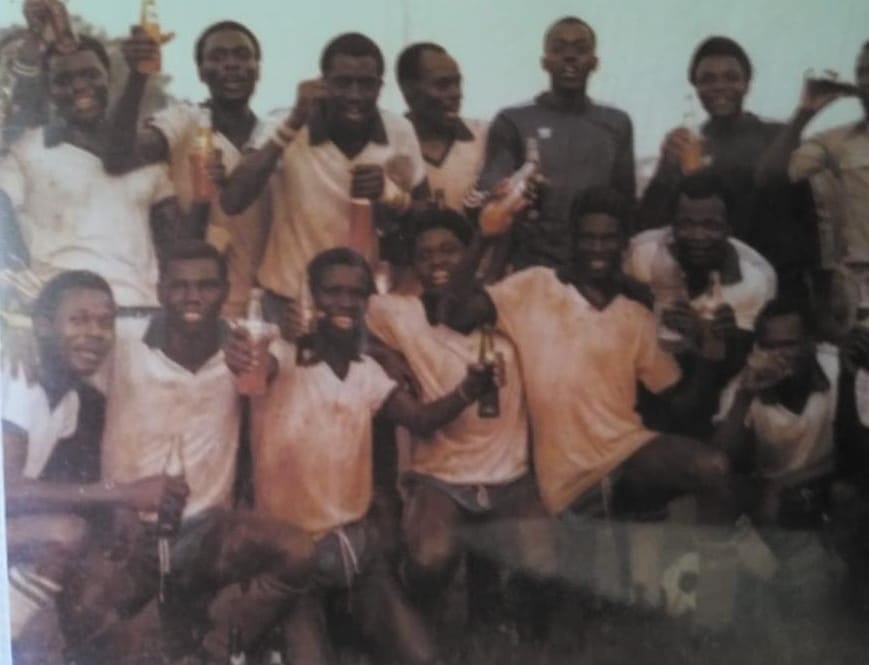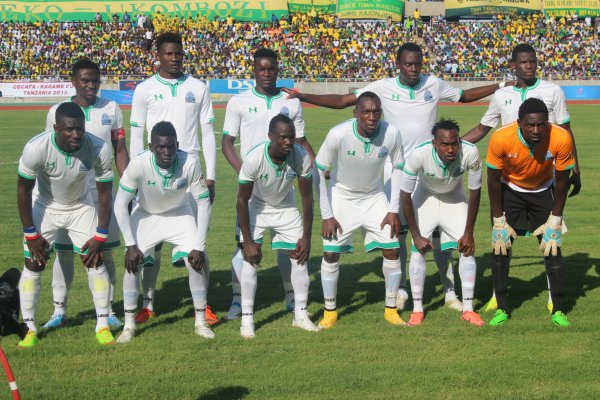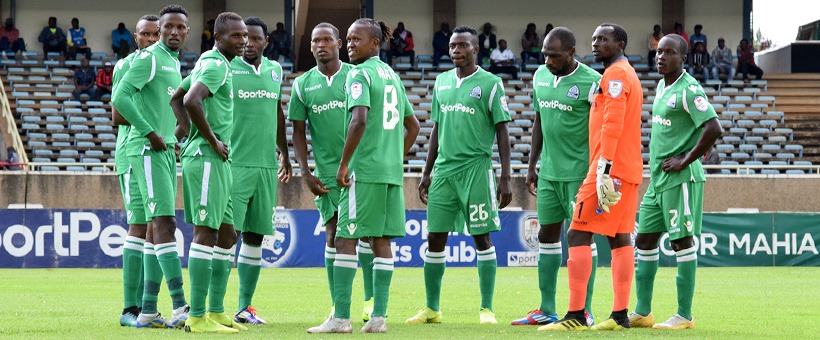Without retaining players, Gor Mahia will never succeed in Africa
There are two common denominators for teams that excel in continental tournaments:
1. Experience
2. Cohesion that comes from playing together for a long time
When Gor Mahia won the Africa cup winners cup in 1987, the team comprised of grizzled veterans who had been at the club for long periods. Austin Oduor (7 years), Peter Otieno Bassanga (6 years), George Otieno Solo (12 years), Bobby Ogolla (10 years), Isaiah Omondi (6 years), Sammy Onyango (8 years), David Ochieng (4 years), George Onyango Fundi and Abbas Magongo (3 years).
Because these players were so highly experienced, they were unfazed even when playing against hostile crowds. Furthermore, they had played together for so long that they were completely in sync. They could anticipate each others runs. They knew each others strengths and weaknesses and could adjust accordingly. The defence was solid because the likes of Makamu, Bassanga and Janabi had been playing together for very long.
The Gor Mahia team that reached the Africa Cup winners cup final in 1979 was a blend of youth and vast experience. The likes of Allan Thigo, Andrew Obunga, George Yoga, Paul Oduwo “Cobra”, Mike Ogolla “Machine”, Dan Odhiambo, Ouma Ole Tunda, Duncan Migan, George Ayuka etc had been playing together since the early 1970s, there familiarity with each other and vast experience is what propelled the team all the way to the final, including defeating the defending champions Horoya, the most feared team in the tournament.

Contrast that with recent seasons. When Gor Mahia played Ferroviario of Maputo in 2012, virtually the entire team was new and largely inexperienced. In Defence, Yusuf Juma and Ivan Anguyo had never played together hence their coordination was shambolic. In midfield, Moses Otieno, Kevin Ochieng, and Collins Okoth similarly had no coherence. And the attack of Ibrahim Kitawi and Baldwin Ngawa and no familiarity with each other as attacking partners. The net result was that Kogalo lost 0-3 away and 0-1 at home.

The 2012 team was however very talented. They started the league very poorly and after 6 matches, they were in the relegation zone. But as they matured and gained cohesion, they went on a winning spree and almost won the league.
In 2014, Gor Mahia yet again went on a signing spree, bringing back George Odhiambo “Blackberry”, Patrick Oboya, Shakava, Walusimbi Kizito and others. But the lack of cohesion was evident again. Sserunkuma , Oboya and Blackberry, though individually brilliant, had never played together and thus the attack was blunt. The midfield of Kizito, Akumu, Kevin Oluoch and Timonah Wanyonyi similarly lacked cohesion and were thus ineffective. While the defence of Shakava, Walusimbi, Calabar and Musa Mohamed was shambolic because they had never played togther. When Walusimbi made a run forward, nobody covered the space he left behind. With such shambles in defence and lack of cohesion in attack, it came as no shock when Gor Mahia lost 8-1 on aggregate to Esperance.
Aside from the lack of cohesion, the other issue that happens when a team has to be rebuilt every year is that late signings are often ineligible to play in African competitions. For example, in 2015, Gor Mahia had a very strong team that won the league unbeaten. Yet at the continental level, they flopped at the first stage, losing to AC Leopards both home and away. This was because key signings like Kagere, Nizigiyimana and Sibomana were signed late and were thus ineligible. In attack, Olunga and Abondo who was returning from Tusker were new signings and had never played with Blackberry. It came as no surprise that the attack was blunt and Gor Mahia lost 0-1 at home and 0-1 away to AC Leopards of Congo-Brazza. And again the 2015 team was very string, once they gelled and gained cohesion, they were unstoppable, winning the league unbeaten.

Unfortunately, the very next year 2016, Gor Mahia started from scratch yet again. Gone was the lethal attack of Kagere, Abondo and Olunga. Instead Gor Mahia had to build a completely new attack with Enock Agwanda playing alongside Jacob Keli. The midfield of Eric Ochieng, Ernest Wendo and Amos Nondi was completely inexperienced and lacked cohesion. In the end, an uninspired Kogalo side lost to CNaPS of Madagascar 1-2 at home and 0-1 away.
The period between 2018 and 2019 was a relatively successful one for Kogalo. During this period, Gor Mahia eliminated much more fancied sides like Super Sport of South Africa, New Star de Douala. They reached the group stage in 2018 and surpassed the group stage in 2019, while recording excellent results against North African teams like Esperance, Hussein Dey and Zamalek.
The common denominator during this period was that the team was vastly experienced and had played together for long periods. Tuyisenge, Blackberry, Kahata, Muguna, Lawrence Juma. While in defence Shakava, Philemon Otieno and others had a lot of familiarity. These were joined by grizzled veterans like Humphrey Mieno and Dennis Oliech who had been internationals for a decade or more.

Then in 2019-2020 season, the shambles returned. When Gor Mahia played Aigle Noir, only 15 players were registered to play in continental football. Luckily Aigle Noir were a sub par team. But the lack of depth came back to bite when Gor Mahia played DC Motema Pembe. Despite a valiant effort, they lost 3-2 on aggregate. A year earlier they would have beaten Motema Pembe.
Unfortunately, retaining players, is not a priority for this office. They have a policy of not approaching players to sign new contracts or even extend their existing contracts. Also when a player is owed 5 months salary, it is difficult to convince them to extend their salaries especially when former players like Tuyisenge and Kahata tell stories of how well they are being treated by their new teams. As a result, Gor Mahia loses several key players in mid season and at the end of the season and always has to start from scratch, playing continental matches with players who are often inexperienced or have never played together.
Furthermore due to Chairman’s Rachier’s refusal to be transparent, the club is constantly broke. As had been stated many times, if Rachier were to choose to be accountable and transparent, this club would have 10,000 members each paying Ksh 100 per month which would amount to Ksh 10 million a month. With those funds, player retention would be easy.
Gor Mahia’s peers are teams that typically excel at the continental level. Gor Mahia should strive for continental glory and not be content with just the local league.


Great Article.
New Gor Mahia EC should read and internalise this article.
Rachier has said that modern corporate governance only allows for annual financial statements and reports.
True but modern corporate governance sees an organisation that pays its employees on time, is intolerant to corruption and revenue leakages, that at least breaks even.
Rachier simply does not want to be transparent or honest. He will make every excuse. He is a charlatan. Many lawyers are used to defending criminals so they are comfortable with bending the truth.
We are going the afc way… Losing key players every season and replacing them with other players in the process losing momentum and cohesion somewhat as the new players struggle to blend with the old.
While this may somehow work for us locally, continentally it can’t. We will be up against more established and professionally ran outfits that will obviously steamroll over our often patched up side.
How do you lose three international players without as much as a fight to retain them?
The new office bearers have a lot to deal with. They fought to be in office…. Now fight to keep the Gor Mahia flag flying high!! Don’t fight for seats just for the sake of it!!
As much as we are losing key players at an alarming rate, am confident that they will be comfortably replaced by better ones within and without the team. I can’t fault the scouts. They are usually spot on in recruiting good players. Hope the same will happen this time round.
Have we ever replaced / scouted etc players capable or good enough to win a continental title since 1987?
Understand the article please which is very clear right from its headline.
The new office must decide to do things differently or else we will not match our opponents both in KPL and champions league
In the 1980’s, players transfer window used to be once in a year (December). These days, it is twice. Those days it was an amateur football, though the club used to help players get employment with state corporations like Kenya Posts and Telecommunications, Kenya Railways etc. These days, with professional leagues, football is a source of income, it is difficult to tie a player to a team if another one is offering him a greener pasture. That is why the likes of Michael Olunga and Tuyisenge had to leave. 2020 has been the worst year for Gor Mahia financially. Never the less, the writer has a point or two. Kudos.
I can accept losing Olunga to Sweden or Blackberry to Denmark.
But Kogalo should not be constantly losing players to Wazito, Tanzania, Zambia and Angola.
You can’t rebuild your team every single year. Which successful team does that?
How come Simba Sports club doesn’t lose their key players as often?
Kagere even received an offer from Egypt and he turned it down.
Its because Simba approaches key players 6 months before their contract ends and convinces them to renew. Also Simba treats their players very well
Meawnhile at Kogalo its constant rumours of players leaving because they are unhappy.
The above article is indeed heavy on excitement and sentimentality but zero in terms of substance and irrelevant for comparison purposes vis a vis the retention of players , then and now .
The circumstances then I.e the 70s , 80s and now are completely different , the reasons why you could retain players then and you cannot retain them now has completely changed , what has not changed is mentality of the club’s leadership , the leadership has not adapted to the changed times .
The ambition of the players then was to join e.g Gor , Afc , Breweries etc , get a job after school and play for Harambee stars .
Playing for Gor or Afc would guarantee one a job at Telkom , Railways , k.Airways , KPA etc , the player of now has an ambition that goes beyond Gor and that is to join the paid ranks abroad and no matter how good the EC is , no matter how well they are paid by local standards , no matter how on time the players are paid , a good player will leave and the reason is that we rank very low in the global food chain of football , this example applies to teams all over the world with the exception of maybe Real Madrid , Barcelona and lately PSG .
As good as the EC of Chelsea are , with good on time salaries , Hazard and Thibaut Courtour still left them for Real Madrid , Ngolo kante , Riyadh Mahrez and Maguire still left Leicester for Chelsea , Man City and Man U respectively , the same is replicated in teams in Portugal , Netherlands and Belgium who lose any player who “makes a mistake of being good” to the clubs that are higher up in the global foodchain .
That is the situation as it is and the clubs like Ajax or Sporting Lisbon have accepted , adapted and aligned their recruitment to fit into that reality by scouting for cheaper but with potential young players , grooming them and selling them to the Madrids, Barcelonas, Man Us etc and that is what Gor , with the Buy in of its fans must do.
For this to happen , it will have to be a process and not an event and this by starting off by identifying young players(and we have them here in kenya) who are talented enough to win the league , join harambee stars and get an opportunity to participate in the continentals and not necessarily to win it in the formative years at Gor and then progressively be contenders I.e from the age of 18 and with contracts long enough to allow them 4-5years at Gor , mature up and then be sold to serious clubs and not pretenders like Simba, Azam or Nkana .
The days a good player could stay at Gor for 7, 8, 9 years are gone , what must happen is for management to adapt to the new realities , a reality that must first of all do away with transactional recruitments , do away with our current unsustainable wage structure and use the savings on scouting and scouts .
Lastly congratulations to the incoming office and to Dolfina who though not my candidate , defeated my candidate fair and square , my candidate who instead of campaigning and mobilizing , only brandished his academic credential , stripped down to his multi coloured boxers , lay down under a coconut tree , slept and dreamed while waiting for manna (votes) to fall on his credentials and like I predicted , woke up and found the elections over and lost
.
To this new office , the bloat is now over , you are now lean , Just do your job and make Gor great again .
Ja Sofaset You missed the point of the article by several kilometres.
Kogalo should not be losing players to teams like Wazito due to non-payment of 5 months salary.
Furthermore, Gor Mahia should be able to match Simba SC. Why have Kogalo become their feeder club ? The answer is because players are going 5 months without pay. If they fix this issue, they will hold onto players.
Zambia teams are not offering more money than Gor Mahia. But they are offering good organization and reliable pay
I think continental football is hurting the club’s finances, maybe they should stay off it for a while to stabilize the finances, structures, assets such as training ground and stadium first. We are spreading ourselves too thin, we cant have it both ways, it’s either stability at home or elusive continental glory.